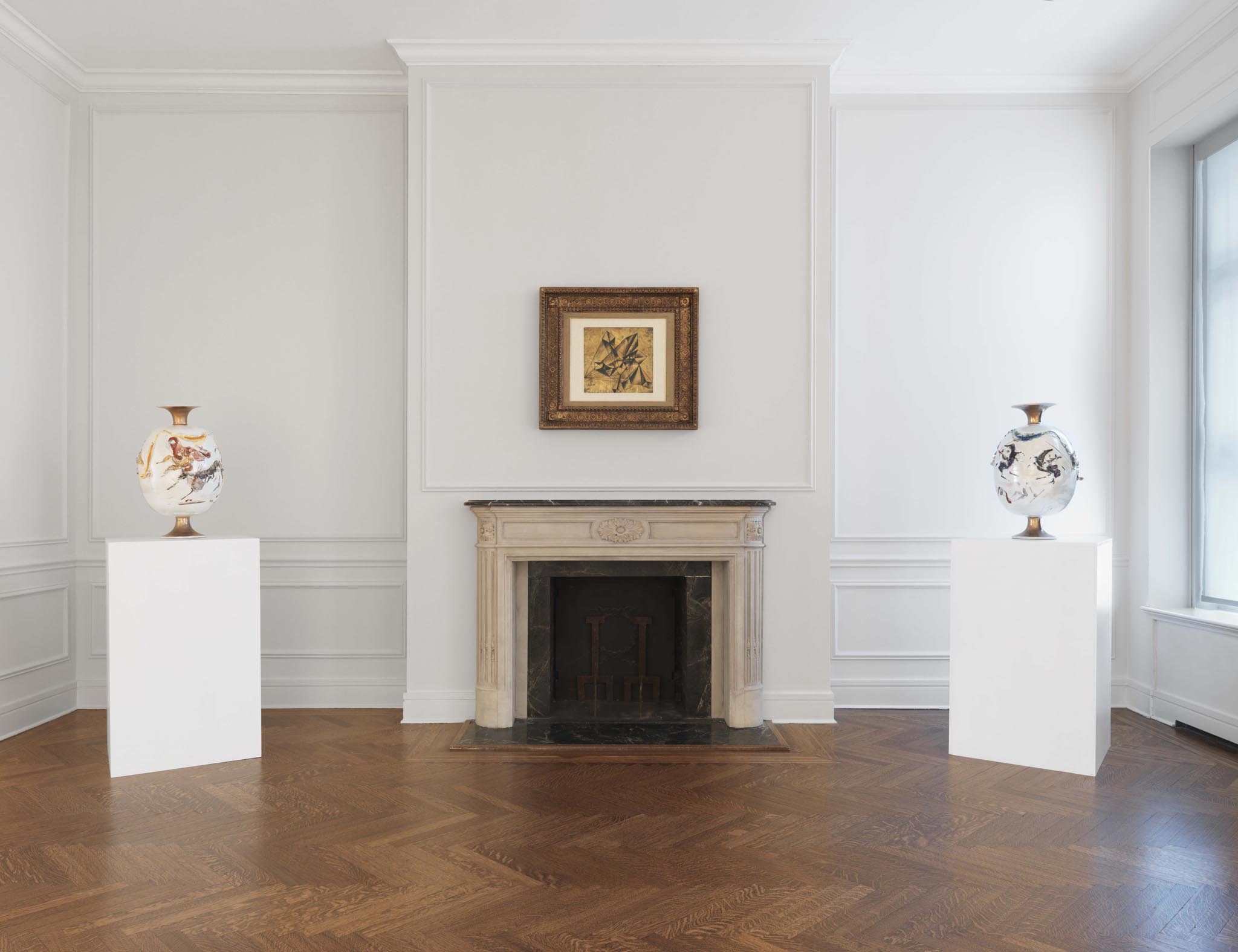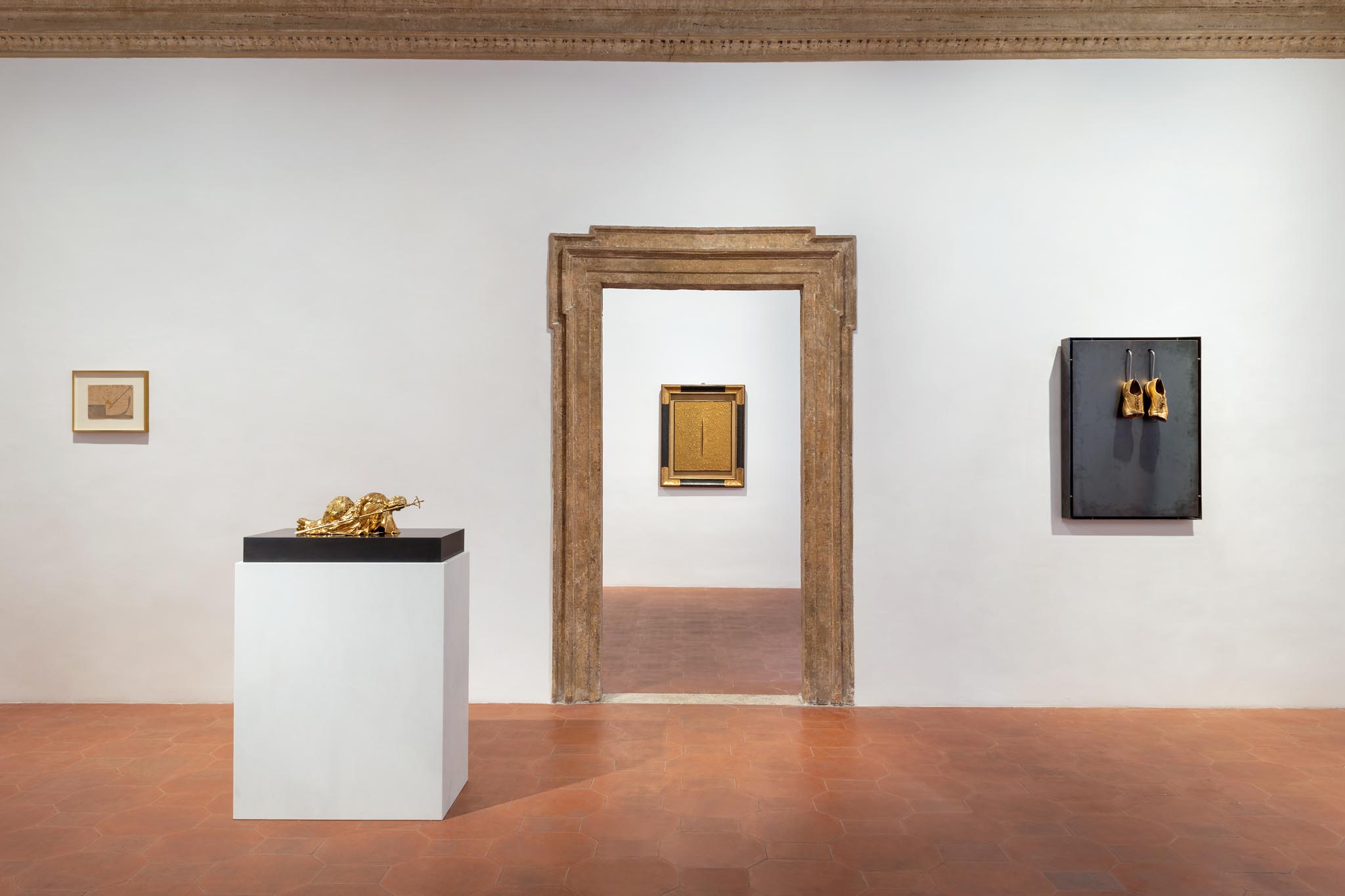Fausto Melotti was born in Rovereto (Trento) on June 8, 1901. In 1918, he enrolled in the Faculty of Physics and Mathematics at the University of Pisa and continued his studies at the Milan Polytechnic, where he graduated in electrical engineering in 1924. Concurrently, Melotti pursued his passion for music, earning a piano diploma. Additionally, he studied sculpture with Pietro Canonica in Turin. In 1928, Melotti embarked on another academic pursuit by enrolling at the Brera Academy in Milan, under the guidance of Adolfo Wildt. It was during this time that he forged a lasting connection with Lucio Fontana. In 1932, Melotti took on a teaching role at the Cantù Craft School, where he conducted a course on modern plastics.
In 1935, Carlo Belli, cousin of Fausto Melotti, authored a significant text titled Kn, which Kandinsky referred to as “the Gospel of Abstract Art.” This text represented a theoretical elaboration of the experiments conducted by abstract artists, including Belli and Melotti, who gathered at Bar Craya in Milan. In the same year, Melotti aligned himself with the Abstraction-Création movement, established in Paris in 1931 by Theo Van Doesburg, Michel Seuphor, and Georges Vantongerloo. This movement aimed to advocate for and propagate the work of non-figurative artists. Concurrently, Melotti, alongside a group of Milanese abstractionists, participated in the inaugural group exhibition of abstract art at the studio of Felice Casorati and Enrico Paulucci in Turin. At the Galleria del Milione in Milan, Melotti showcased sculptures deeply inspired by contrapuntal themes. His initial exhibition failed to gain significant attention in Italy; however, he earned recognition in France, thanks of Léonce Rosenberg, and in Switzerland, where he was honored with the La Sarraz International Prize in 1937. That same year, during the 6th Milan Triennale, he unveiled a key piece titled La Costante Uomo for the Sala della Coerenza, a space designed by the B.B.P.R. studio (Banfi, Belgiojoso, Peressutti, Rogers). From 1941 to 1943 he lived in Rome, where he participated in Luigi Figini and Gino Pollini’s project for the Palace of the Armed Forces. In the meantime, he made drawings, paintings, and composed poems which will be published by Giovanni Scheiwiller in 1944 under the title ll triste Minotauro.
After the war, Melotti dedicated himself to ceramics, mastering a highly refined technique that earned him widespread acclaim for its exceptional quality. His craftsmanship was acknowledged through numerous awards, including the Grand Prize of the Triennale in 1951, as well as the prestigious Prague Gold Medal and the Munich Gold Medal. During this period, Melotti forged a profound professional and personal relationship with Giò Ponti, with whom he collaborated on two significant projects: the Villa Planchart in Caracas (1956) and the Villa Nemazee in Tehran (1960). In 1967, he showcased a series of newly inspired sculptures at the Galleria Toninelli in Milan, marking the beginning of a succession of exhibitions both in Italy and abroad. These exhibitions swiftly propelled him to success, offering the public a glimpse into his diverse artistic endeavors, ranging from sculptures to bas-reliefs, theaters to works on paper, and ceramics.
In 1974, Melotti’s collection of writings and poems entitled Linee was published by Adelphi, earning him the Diano Marina Prize in 1975. Subsequently, in 1979, a solo anthological exhibition was held at Palazzo Reale in Milan, followed by a major retrospective in Florence at Forte Belvedere in 1981. On the occasion of the Florentine exhibition Italo Calvino writes Gli effimeri, a text dedicated to the artist’s eponymous work, which he describes as follows, “A score of weightless ideograms like aquatic insects that seem to twirl on a brass espalier shielded by a gauze thread.”
During the 1980s, Florence, Rome, Venice but also New York, London, Zurich, Frankfurt and Paris devoted extensive solo and group exhibitions to him. Melotti died in Milan on June 22, 1986. That month, he was awarded by the XXXXII Venice Biennale of Visual Arts by the Leone d’oro alla memoria.

